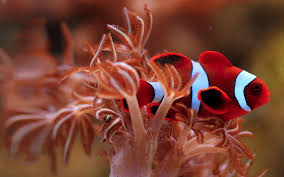Tea tasting is an art and science that requires knowledge, experience, and a refined palate. Becoming a tea tasting expert means developing the ability to analyze, describe, and evaluate different types of tea based on appearance, aroma, taste, and texture.

Whether you want to become a professional tea taster or simply enhance your appreciation of fresh tea, this guide will take you through the essential skills, techniques, and training needed to master the world of tea tasting.
1. Understanding the Role of a Tea Tasting Expert
A tea taster is responsible for identifying and assessing the quality of tea. They work in tea plantations, tea companies, and research institutes, helping to grade, blend, and improve tea products.
1.1. Key Responsibilities of a Tea Taster
✔ Evaluating Fresh Tea: Assessing color, aroma, and flavor to determine quality.
✔ Tea Blending: Mixing different tea leaves to create balanced flavors.
✔ Quality Control: Ensuring consistency in tea production.
✔ Market Research: Identifying trends and consumer preferences.
✔ Educating Others: Teaching about tea culture, brewing methods, and tasting techniques.
💡 Fact: In professional tea tasting, even slight variations in temperature, water quality, or brewing time can affect the final flavor.
2. Developing a Deep Knowledge of Fresh Tea
To become a tea tasting expert, you must understand the different types, origins, and characteristics of fresh tea.
2.1. Main Categories of Chinese Fresh Tea
🟢 Green Tea (绿茶, Lǜ Chá) – Fresh, grassy, and slightly sweet (e.g., Longjing, Biluochun).
⚪ White Tea (白茶, Bái Chá) – Delicate, floral, and lightly fermented (e.g., Silver Needle, Bai Mudan).
🟤 Oolong Tea (乌龙茶, Wūlóng Chá) – Floral, creamy, and complex (e.g., Tieguanyin, Da Hong Pao).
🔴 Pu-erh Tea (普洱茶, Pǔ’ěr Chá) – Aged, earthy, and full-bodied (e.g., Raw Pu-erh, Ripe Pu-erh).
💡 Tip: To build expertise, study tea-growing regions such as Fujian, Yunnan, and Zhejiang, known for producing high-quality teas.
3. Mastering the Five Essential Senses of Tea Tasting
A tea tasting expert must train their senses to detect subtle differences in tea.
3.1. Visual Examination (Sight 👀)
✔ Look at dry tea leaves – Color, shape, and size indicate freshness and quality.
✔ Observe the brewed tea – High-quality tea has a clear, bright liquor.
3.2. Aroma Analysis (Smell 👃)
✔ Dry Leaf Aroma: Freshness, floral, nutty, or grassy notes.
✔ Wet Leaf Aroma: Releases more intense and complex scents after brewing.
✔ Cup Aroma: The lingering scent after sipping reveals depth and body.
3.3. Flavor Detection (Taste 👅)
✔ Sweetness: Indicates high-quality tea buds.
✔ Bitterness & Astringency: Balanced bitterness is normal, but too much is undesirable.
✔ Umami: A savory, broth-like richness found in high-end green teas.
3.4. Texture Perception (Mouthfeel 👄)
✔ Silky & Smooth: High-quality white and oolong teas.
✔ Thick & Full-bodied: Found in aged Pu-erh teas.
✔ Drying Sensation: Too much astringency may indicate lower quality.
3.5. Aftertaste Evaluation (Finish 🎭)
✔ A long, pleasant aftertaste is a hallmark of premium tea.
💡 Tip: Use a tea aroma wheel to identify and describe complex flavor notes accurately.
4. Learning Professional Tea Tasting Techniques
4.1. The Standard Tea Tasting Method
1️⃣ Weigh the Tea Leaves – Use 2–3 grams per 150ml of water.
2️⃣ Boil Fresh Spring Water – Ideal temperature varies by tea type.
3️⃣ Steep Properly – Follow correct brewing time (10s – 5 min).
4️⃣ Observe the Leaves – Examine color and unfurling process.
5️⃣ Inhale the Aroma – Compare dry, wet, and cup aroma.
6️⃣ Sip Slowly – Roll the tea over your tongue and note the flavors.
7️⃣ Assess the Aftertaste – A good tea lingers pleasantly.
💡 Tip: Slurping tea aerates the liquid, enhancing flavor perception.
5. Building a Professional Tea Tasting Career
5.1. Enroll in a Certified Tea Tasting Course
🎓 Recommended Tea Schools & Certifications:
✔ China Tea Science Society (CTSS) – Advanced tea sommelier training.
✔ Tea & Herbal Association of Canada (THAC) – Tea sommelier certification.
✔ International Tea Masters Association (ITMA) – Global tea training programs.
5.2. Gain Hands-On Experience
✔ Visit tea plantations to learn about cultivation and processing.
✔ Work with tea traders, retailers, or research institutions.
✔ Participate in international tea competitions.
5.3. Specialize in a Niche
✔ Fine Tea Blending – Crafting unique tea blends.
✔ Tea Consulting – Advising hotels and restaurants.
✔ Sensory Evaluation – Researching taste perception.
💡 Tip: Create a tea-tasting journal to track your observations and refine your skills.
6. Understanding the Global Tea Industry
6.1. Key Tea Producing Countries
✔ China – World’s largest tea producer (green, black, white, Pu-erh).
✔ Japan – Famous for matcha and sencha.
✔ India – Known for Assam, Darjeeling, and Nilgiri teas.
✔ Sri Lanka (Ceylon) – Specializes in bold black teas.
6.2. Emerging Trends in the Tea Market
✔ Organic and Sustainable Tea – Growing demand for eco-friendly teas.
✔ Health and Wellness Teas – Green and herbal teas gaining popularity.
✔ Artisanal and Small-Batch Teas – Consumers seeking rare, high-quality options.
💡 Tip: Attend tea expos and trade shows to stay updated on industry trends.
7. Conclusion: Embarking on Your Tea Tasting Journey
Becoming a fresh tea tasting expert is a rewarding journey that requires patience, curiosity, and dedication. By mastering sensory evaluation, professional brewing techniques, and industry knowledge, you can transform your passion for tea into a lifelong career or personal expertise.
Final Steps to Get Started:
✔ Start tasting tea daily – Compare different types and take notes.
✔ Join tea clubs or online communities – Connect with other enthusiasts.
✔ Enroll in professional training – Gain certification and hands-on experience.
✔ Explore tea culture – Travel to tea-growing regions and deepen your knowledge.
🌿 Tea tasting is a lifelong learning process—so sip, savor, and enjoy the endless discoveries that fresh tea has to offer! 🍵✨









